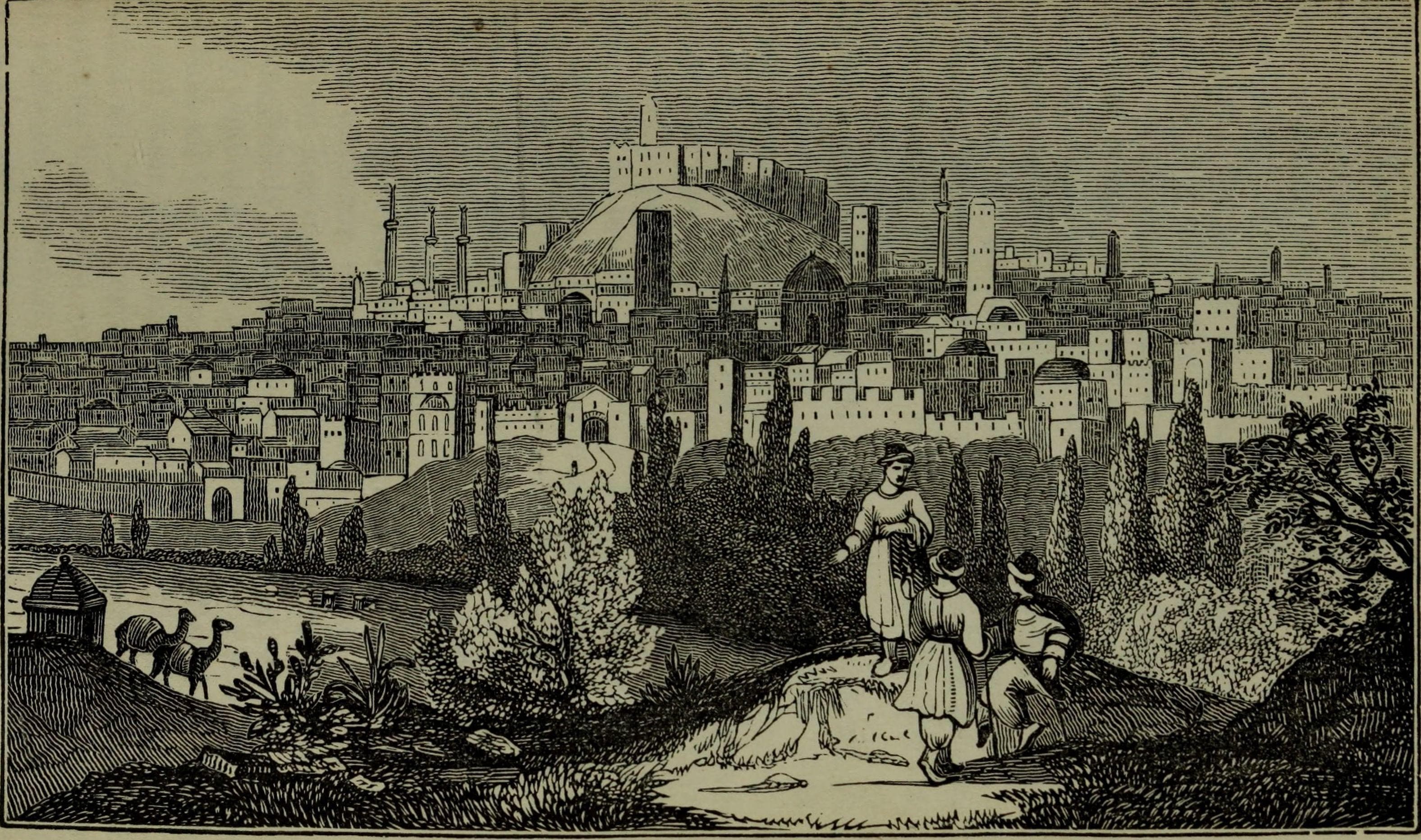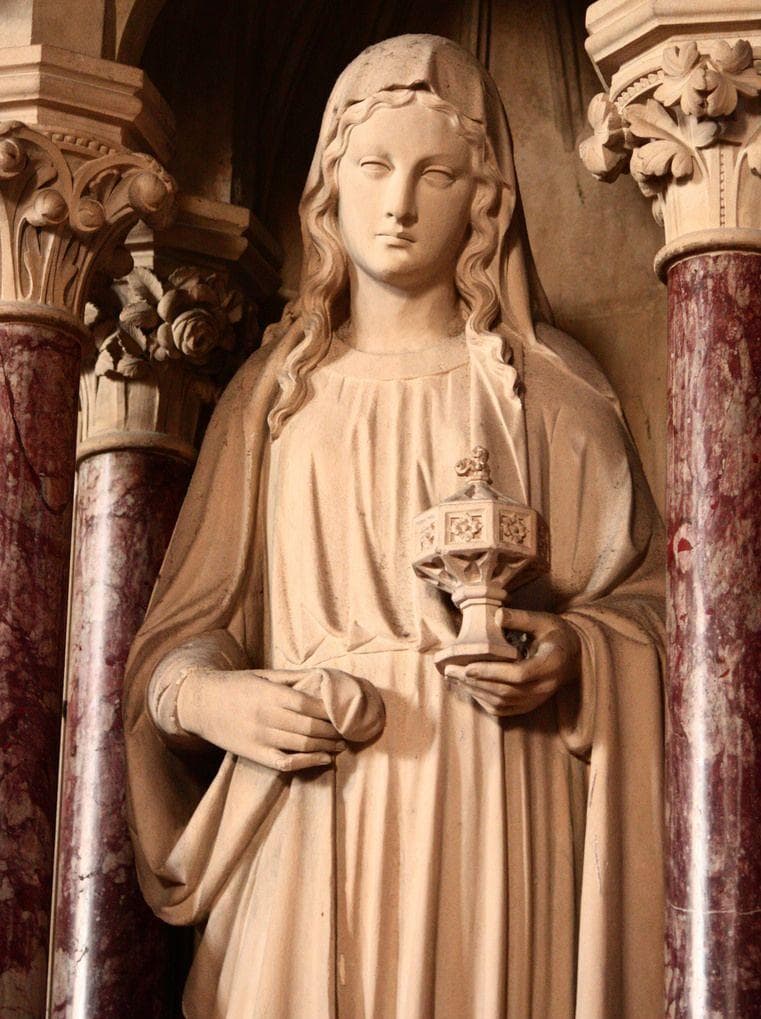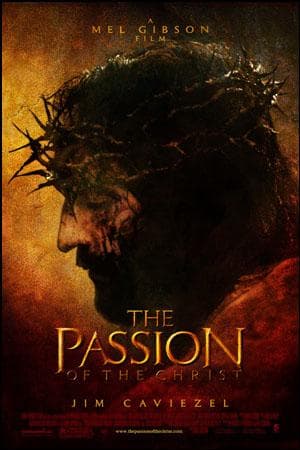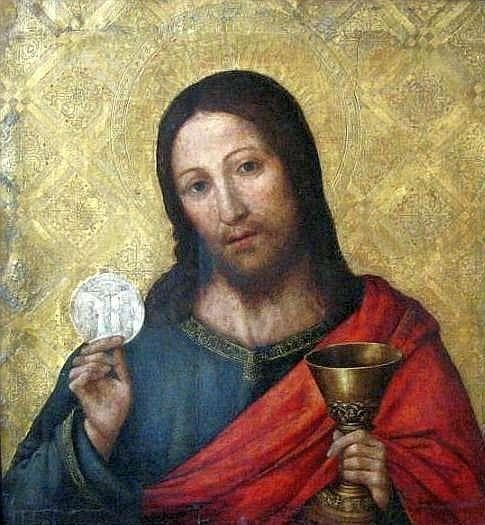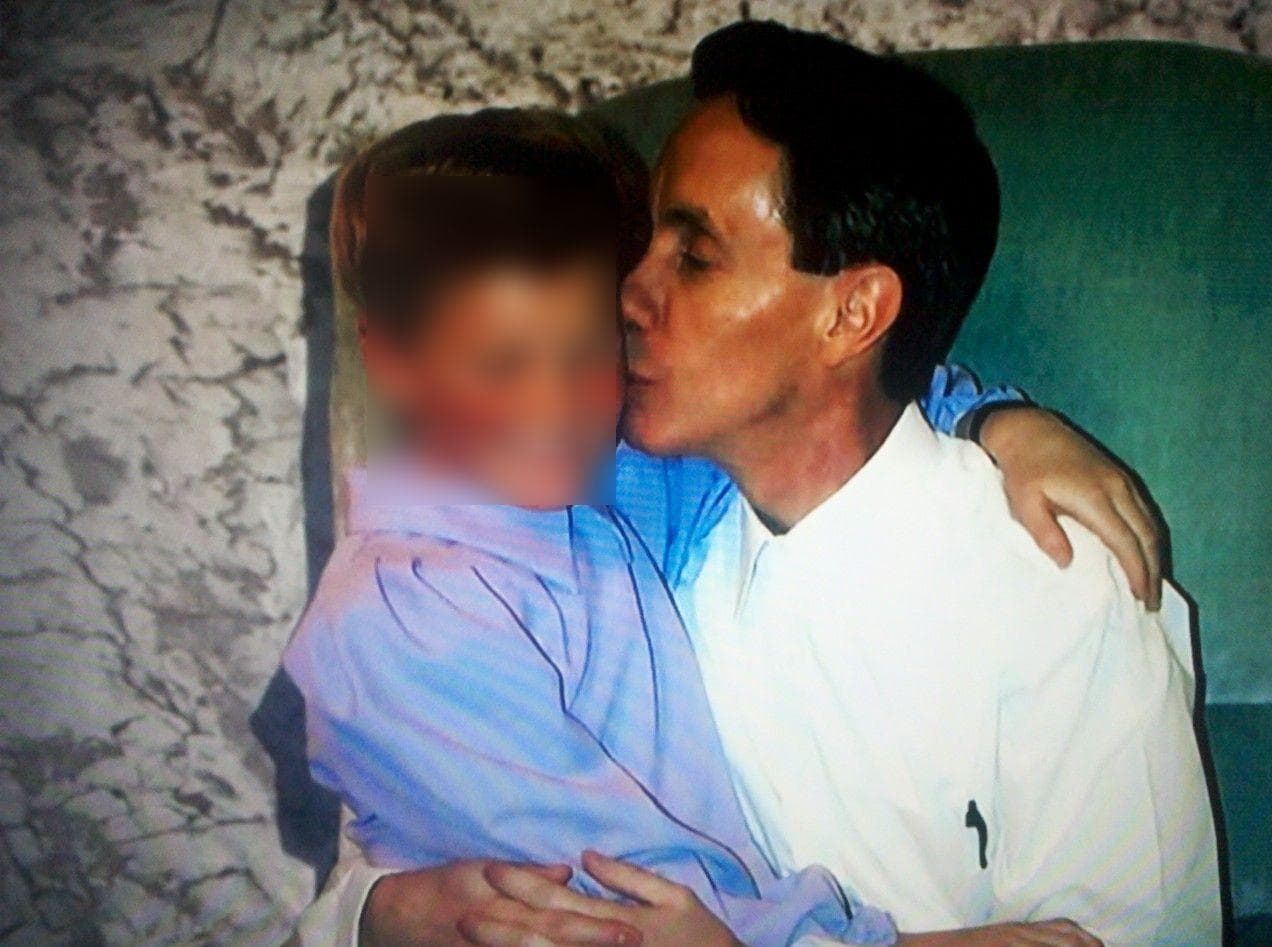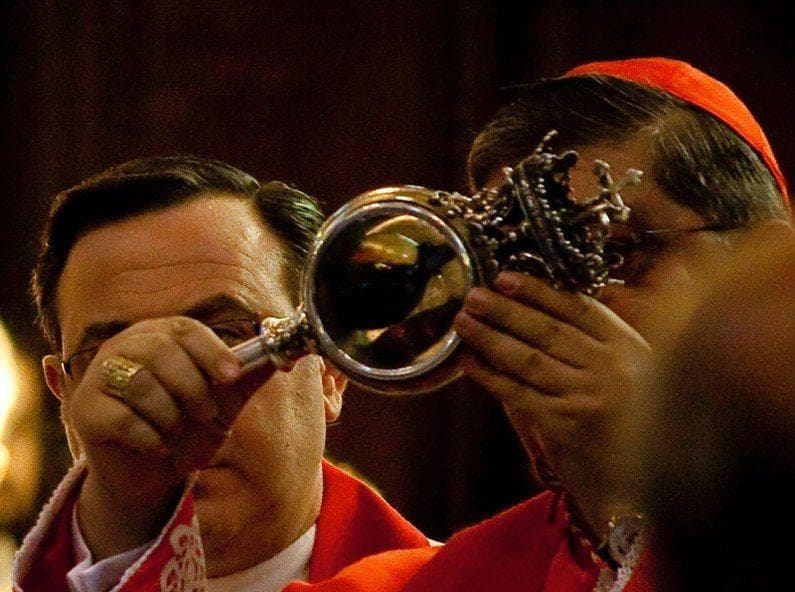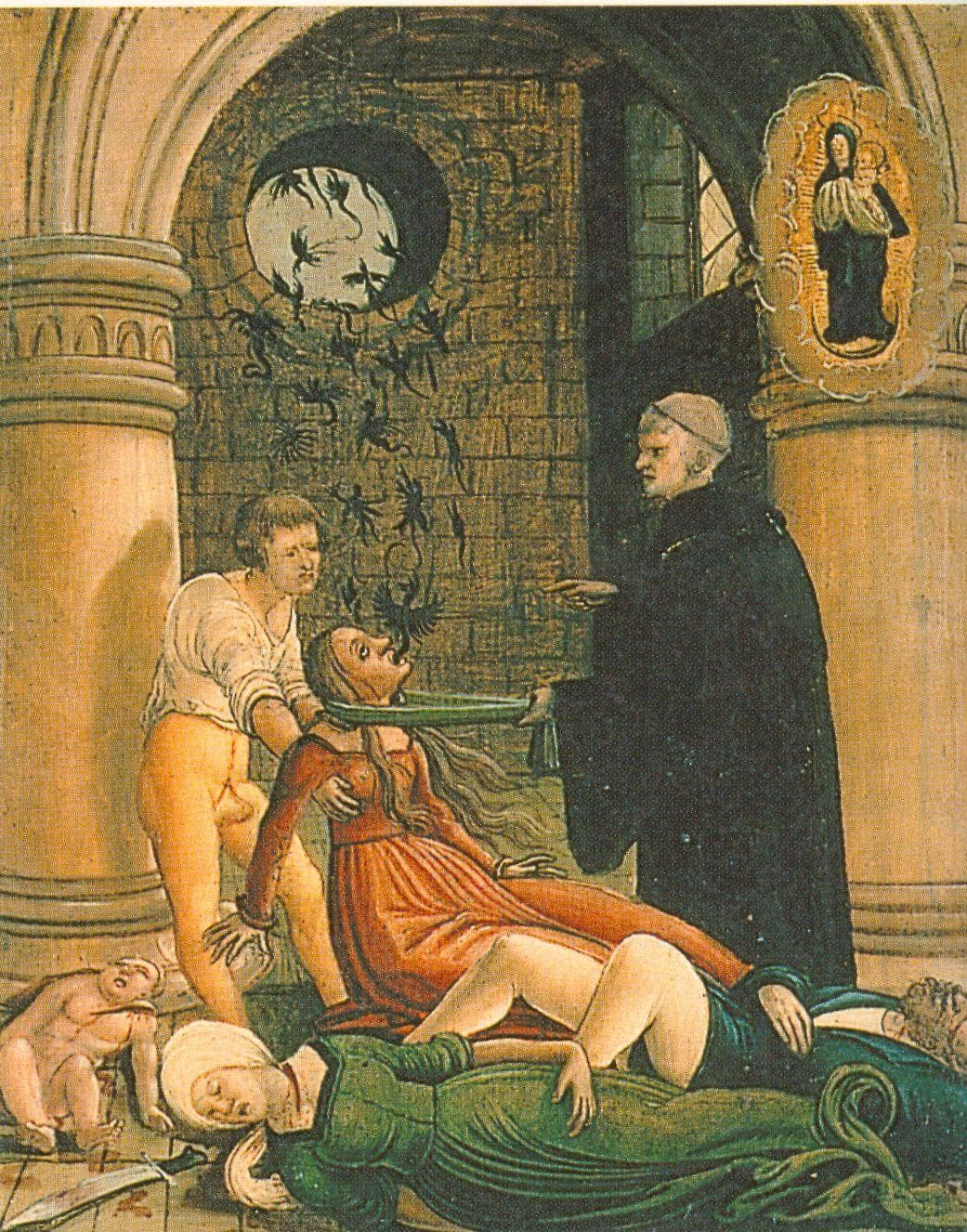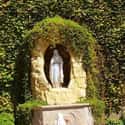-
(#15) Therese Neumann's Stigmata
Therese Neumann was a supposed mystic, healer, and stigmatic who lived in Germany from 1898 until her death in 1962. She experienced nervous shock, hysterical bouts of blindness and paralysis, and digestive problems after an accident during a fire in 1918. In 1926, stigmata supposedly appeared on her body in multiple places over several weeks, including nine on her head evoking the crown of thorns, wounds to her hands, and marks across her back as if from flogging. Neumann also had visions and went into trances. The marks on her body, 45 in all, were still present when she died in 1962.
Neumann had also stopped eating food in 1922 and gave up most water from 1926 onward; instead, she claimed to require Holy Communion on a daily basis to survive. In 1927, she underwent 15 days of observation ordered by an archbishop to corroborate her claims. A group of four nuns trained as nurses, psychiatrist Dr. Ewald, and physician Dr. Seidl kept track of everything she ingested as well as weight measurements and found that Neumann did indeed appear to subsist on her daily Eucharist.
A study published in 2006 determined that compresses allegedly soaked in Neumann's blood during a stigmata occurrence were legitimate, based on DNA matching with blood samples from Neumann's niece, though this did not confirm the cause of Neumann's wounds. Several factors - including the diagnosis of hysteria from Neumann's doctor - led to a study in 2008 that diagnosed the alleged mystic with a form of dissociative disorder.
-
(#3) Our Lady Of Lourdes And The Healing Water
In 1858, in Lourdes, France, a 14-year-old girl named Bernadette Soubirous lived with her family in an abandoned prison. Bernadette went with her sister and a friend to collect firewood on February 11. She lagged behind due to asthma and found herself alone at the Grotto of Massabielle, while the other girls had already crossed the cold stream.
According to Bernadette, as she worked to remove her socks and shoes, gusts of wind issued from the grotto before a blinding light followed. A woman in white robes with a blue sash, yellow roses on her feet, and a rosary in her hands appeared to Bernadette and encouraged her to pray. Bernadette's companions did not see any of this and brushed off her account of the vision.
She visited the woman daily over the next 15 days, despite police intervention and her parents' disapproval. On February 25, the woman told Bernadette to drink from and bathe herself in the fountain, but there wasn't one. The girl dug with her fingers until she found an underground water spring that still flows today. Three days later, the woman told the girl to build a church on the land, but the local clergy dismissed her until 1862 when they officially decreed the Virgin Mary had revealed herself.
Millions flock to the spring annually, and the Medical Bureau of the Sanctuary claims upward of 7,000 visitors have received healing from their ailments by immersing themselves in the spring. Each cured person submits their information to the Bureau for scientific authentication before leaving the holy grounds. Of the 7,000 reports of healing since 1862, 66 remain unexplained by science.
Bernadette became St. Bernadette after committing herself to a life of servitude as a nun and is one of the incorrupt saints recognized by the Catholic Church.
-
(#5) Consecrated Hosts That Survived Disaster
The consecrated hosts refer to the wafers used in Holy Eucharist. Catholics believe the wafers, along with the wine, turn into the actual body and blood of Christ during the priest's consecration of the items. The wafers reside in a tabernacle until retrieved for Holy Eucharist or other designated times outside of Mass.
Sixteen months after a 2016 earthquake in Italy, Father Angelo Ciancotti claimed he recovered 40 consecrated hosts from the Our Lady of the Assumption church. Ciancotti said he found the hosts' container had fallen in the quake, but the lid remained intact. He maintains the hosts showed no signs of mold or staleness about them after almost a year and a half of being locked in the rubble of the tabernacle.
The nuns who made the hosts confirmed nothing but flour and water was in the wafers.
-
(#11) The Star Of Bethlehem
The Star of Bethlehem, which led the magi to the newborn Christ in the Bible, is a miracle to all sects of Christianity - not just Catholicism. Debate remains concerning the exact source of the star, though. Some believe God created and sent the star to guide the wise men to the manger where Mary gave birth, while others think it's nothing more than a symbolic representation of hope. Certain biblical theories suggest the star was an angel, whereas science hypothesizes it could have been a supernova or rare alignment of planets.
Astronomer Mark R. Kidger wrote The Star of Bethlehem: An Astronomer's View, where he laid out his theory that it was an exceedingly bright nova star. He dates the nova's appearance to March in the year 5 BCE. Astronomer Frank J. Tipler also believes the star was a nova. According to Hayden Planetarium lecturer Joe Rao, Jesus Christ is thought to have been born sometime after 4 BCE, and the star appeared between 7 and 2 BCE.
-
(#10) The Shroud Of Turin
The Shroud of Turin is supposedly the burial cloth of Jesus Christ, imprinted with his face. Centuries have passed since the Shroud was discovered and the Church sought to confirm it once held Jesus. Residing in the Cathedral of St. John the Baptist in Italy, the Shroud has undergone carbon dating, textile examinations, identification of the material staining the cloth, and multiple other fields of scientific testing. As of 2018, scientists assert the unlikelihood that the Shroud of Turin ever held Jesus, while Catholic media claims it is real.
In July 2009, the site Catholic Culture claimed the phrase "king of the Jews" found on the Shroud proves its authenticity. Jewish scientist Barrie Schwortz - who served on the 1978 Shroud of Turin Research Project - told the Catholic News Agency in 2015 that "the only way [the image could be produced] is by some interaction between cloth and body... it can’t be projected."
The same research panel released findings in 1979 arguing the liquid on the Shroud was not blood. In addition, carbon dating of the cloth provided a timeline between 1260 and 1390 CE; Jesus is thought to have died between 29 and 36 CE. A study published in July 2018 sought to re-create the body position needed to mark the fabric as it exists and found it was impossible. How the Shroud came to be is still not clear.
-
(#4) Our Lady Of Zeitoun
Between 1968 and 1971, millions of people claimed to see the illuminated Virgin Mary atop the St. Mary's Coptic Orthodox Church in Zeitoun, Egypt. One witness thought he saw a nun on the roof of the church and ran to intercept what he believed was a suicide attempt. Instead, the glowing woman disappeared. Over the next three years, the Virgin Mary reportedly appeared for minutes or hours to crowds of people gathered at the foot of the church. She was seen holding olive branches and with doves flying around her at night, or with St. Joseph and a baby Jesus on occasion.
Investigations by local police tried to debunk the miracle and disperse the crowds from the area. A search within a 15-mile radius of the church uncovered no special effects equipment, special lighting rigs, or projectors capable of putting on such a spectacle. Some theories include mass hysteria, with the gathered people seeing what they wanted or expected to see. Many of the assembled witnesses, though, were Muslim and had no reason to imagine a figure they don't consider highly significant to their religion.
Many religious scholars point to Mary's appearance as the fulfillment of a promise she made to the family who built the church. Around 1918, the Virgin Mary allegedly appeared to Ibrahim Khalil in a vision and told him to build the church in her name on the land. She promised to return to the location and bless the church in 50 years. The church was completed in 1924, and the Virgin Mary returned in 1968 to perform what is now considered the miracle of Zeitoun.
New Random Displays Display All By Ranking
About This Tool
Catholics believe that miracles are the work of God, either directly or through the prayers and intercessions of specific saints. Many people regard miracles as events that destroy or deviate from the laws of nature, which are naive, superstitious, and unscientific. But Christians managed to support a self-satisfied world with firm faith, in the history of Catholicism, there are many events and great figures about miracles.
Catholics firmly believe that important historical figures who have fulfilled the Lord’s promise are God’s masterpieces. The random tool shares 15 amazing miracles in Catholicism that no one can explain.
Our data comes from Ranker, If you want to participate in the ranking of items displayed on this page, please click here.


